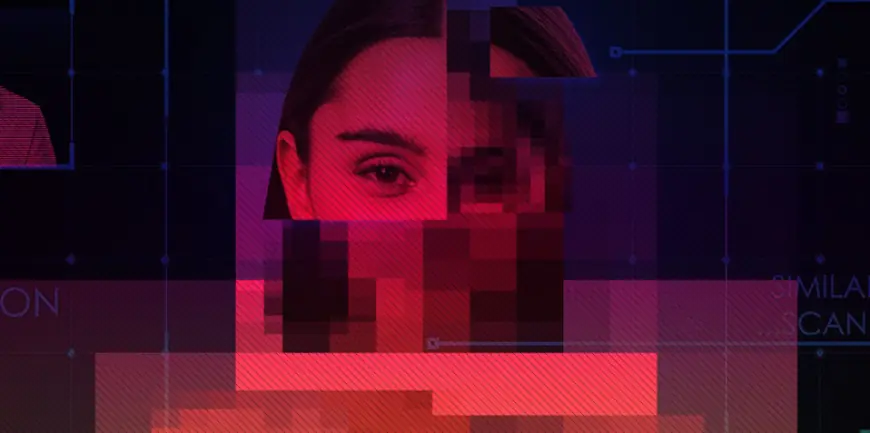Image Recognition Technology Explained: What It Is and How It’s Powering the Future
Image recognition technology has become one of the most powerful tools in artificial intelligence, transforming how machines interpret visual content.

Image recognition technology has become one of the most powerful tools in artificial intelligence, transforming how machines interpret visual content. At its core, image recognition enables computers to analyze and categorize elements in digital images—identifying people, objects, scenes, or even text with growing accuracy.
While humans effortlessly understand visuals, teaching machines to do the same involves complex models, significant computing power, and vast datasets. Still, the demand for this tech is soaring—the global image recognition market is projected to reach $10.53 billion by the end of this year.
Let’s break down what image recognition is, how it works, and where it’s creating real-world impact.
What Is Image Recognition?
Image recognition is a subset of computer vision that focuses on identifying patterns, objects, and features in visual data. Using a combination of AI, machine learning (ML), and camera systems, image recognition software allows machines to "see" and respond to images in a context-aware way.
It’s used across industries—from tagging people in social media photos to helping medical professionals analyze diagnostic scans.
How Image Recognition Works
Image recognition models are built to mimic how humans perceive visuals but rely entirely on data. The process generally involves:
1. Dataset Preparation
A dataset filled with labeled images is created. For example, a set might contain thousands of photos labeled "cat," "tree," or "car" to help the system understand what each object looks like.
2. Neural Network Training
A deep neural network—especially a Convolutional Neural Network (CNN)—processes this data to learn key features like edges, shapes, or colors. CNNs excel at automatically identifying visual patterns.
3. Prediction and Classification
Once trained, the model can evaluate new, unseen images. It breaks down the image into pixels, runs it through multiple layers of analysis, and then predicts what the image contains.
Edge detection and spatial analysis are often applied to improve accuracy, especially when distinguishing between similar objects or angles.
Also Read: Visual AI: What Is It and What Does It Do?
Types of Learning in Image Recognition
Different learning approaches are used to build reliable recognition models:
Supervised Learning
-
How it works: Models are trained on clearly labeled datasets.
-
Example: Thousands of images labeled “apple” or “banana” help the model differentiate between fruits.
-
Use case: High-accuracy tasks with ample labeled data.
Unsupervised Learning
-
How it works: No labels are provided. The model explores patterns or clusters in the data independently.
-
Benefit: Useful when labeling is impractical or too costly.
Self-Supervised Learning
-
How it works: A form of unsupervised learning where the model generates labels internally from the data structure.
-
Example: Teaching a machine to understand human faces without any human-labeled data.
-
Why it matters: Ideal when limited labeled data is available.
Key Use Cases of Image Recognition
Image recognition is already reshaping multiple sectors. Here are some of its leading applications:
1. Face Detection and Recognition
From unlocking smartphones to securing facilities, facial recognition systems analyze key facial landmarks. AI can even determine emotions, gender, or age from photos.
2. Visual Search Tools
Apps like Google Lens let users take a photo of something and instantly search for related content online—whether it’s a landmark, product, or piece of text.
3. Medical Imaging Analysis
AI helps doctors detect anomalies in scans like X-rays, MRIs, and CTs. It supports early diagnosis of diseases, improving patient outcomes in radiology and pathology.
4. Automated Quality Checks
Manufacturers use AI to inspect products during assembly. Trained systems identify defects quickly, enhancing efficiency and maintaining high quality standards.
5. Document and Fraud Scanning
Banks use AI to scan checks or official documents, verifying signatures, extracting data, and flagging inconsistencies for fraud prevention.
6. Public Safety and Surveillance
Government and security agencies leverage image recognition to detect individuals in footage, supporting investigations and maintaining public safety.
Surveillance & Security: A Leading Application Area
Security is one of the most prominent use cases of image recognition. High-resolution cameras, drones, and facial detection systems are now standard in surveillance strategies.
-
Biometric Access: From airports to smartphones, facial recognition ensures only authorized individuals gain access.
-
Drones & Border Patrol: Equipped with image recognition, drones monitor restricted areas and detect potential threats.
-
Workplace Safety: In industrial environments, systems track human movement near machinery to prevent accidents.
Cloud-based solutions like Google Cloud Vision and Microsoft Azure Computer Vision make these services widely accessible, offering scalable and flexible image recognition APIs.
Conclusion: A Game-Changer in Modern AI
Image recognition isn’t just a technological milestone—it’s a practical, scalable solution that’s already transforming industries. From smarter healthcare diagnostics to automated retail experiences, this technology is enhancing how businesses operate and how people interact with machines.
As AI continues to evolve, expect image recognition to become even more accurate, efficient, and embedded in everyday systems.
Also Read: Understanding AI in Computer Vision: A Beginner’s Guide
What's Your Reaction?
 Like
0
Like
0
 Dislike
0
Dislike
0
 Love
0
Love
0
 Funny
0
Funny
0
 Angry
0
Angry
0
 Sad
0
Sad
0
 Wow
0
Wow
0

















































